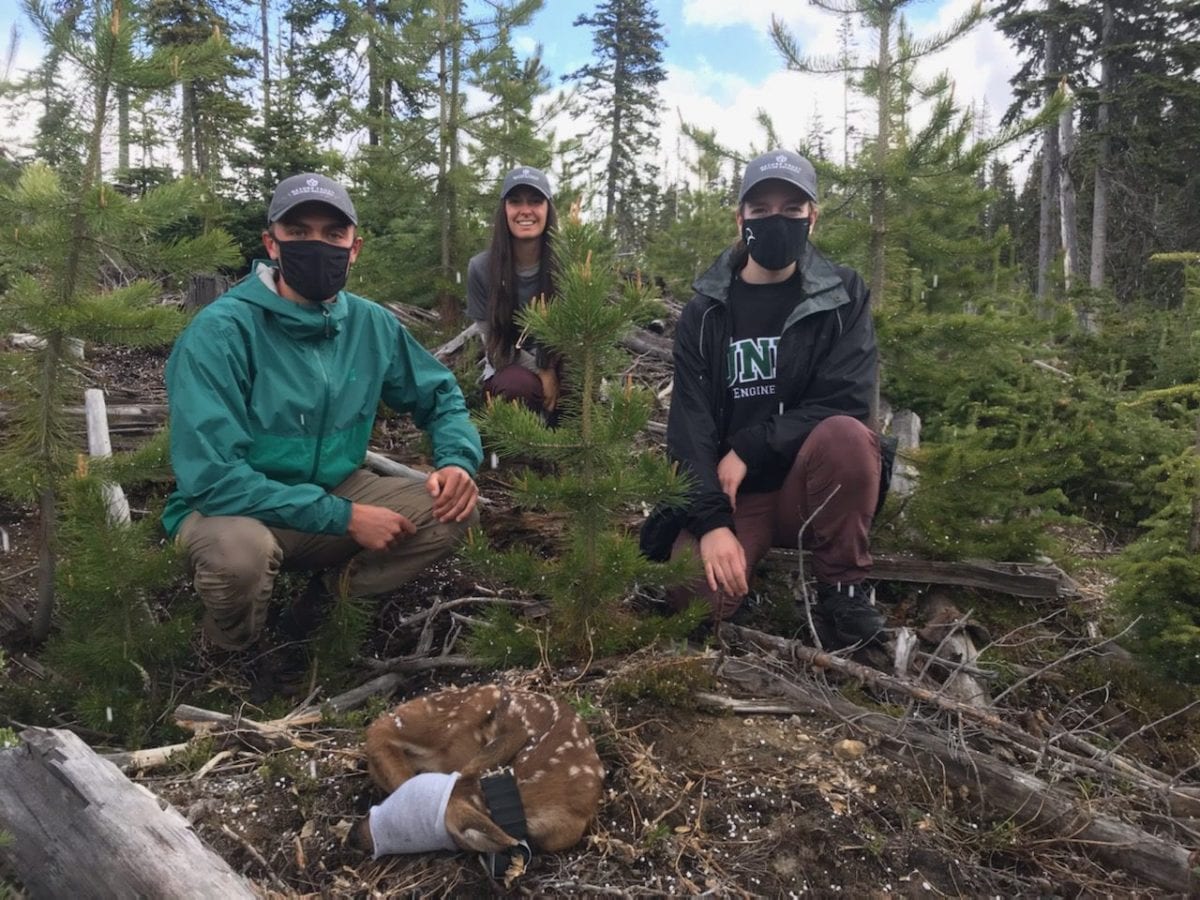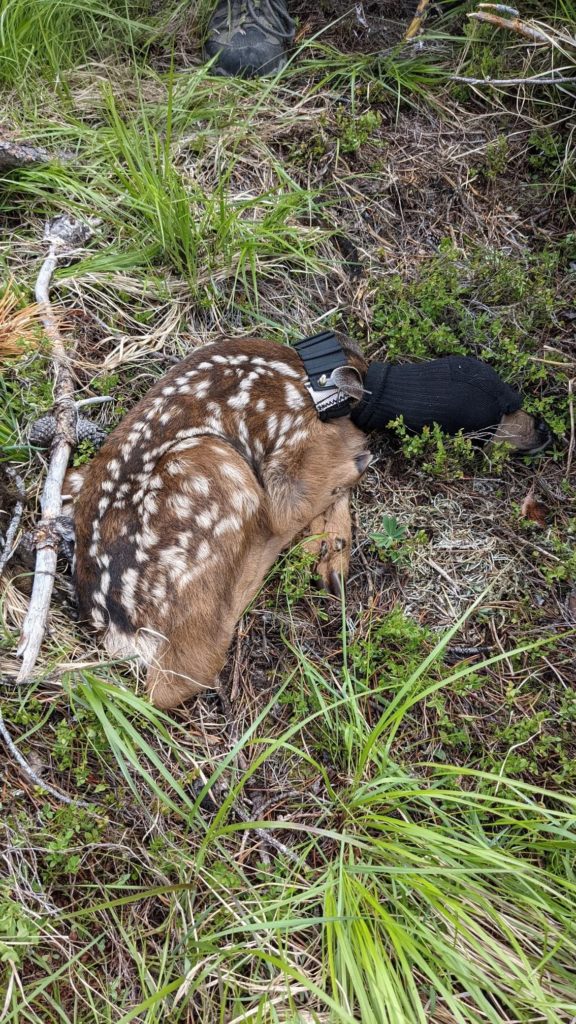
Early this month, Alex Thomson and The Nature Trust of BC’s Okanagan Conservation Field Crew were able to help with a very special Project – The Southern Interior Mule Deer Project.
The Southern Interior Mule (SIM) Deer Project began in 2016 and is a collaboration with the Okanagan Nation Alliance, The University of BC Okanagan, The University of Idaho and the British Columbia Fish and Wildlife Branch. This ongoing collaboration is collecting scientific data on why SIM deer populations are decreasing.
Through the use of cameras and collars, the project spans 40,000 square kilometers of the West Okanagan, Boundary, and Cache Creek regions. The goal is to gain insight into the complex animal interactions and the different human-caused landscape disturbances that may be negatively affecting SIM deer populations. In addition to landscape change and disturbance, increases in various predator or competitor species could also be negatively affecting deer populations. Ultimately, the challenge is to determine which threats and/or changes in the environment are impacting their decline most significantly.

Although the project is taking place over a large scale, Alex and his crew helped with locating newborn fawns, collaring them, and recording their size and general health measurements at Princeton-Summerland Road, Elkhart, Loon Lake, and Pennask. They helped with the collection of data that will assist in providing more accurate estimations of newborn fawn survival. Collecting data on does and their fawns is extremely important for the project because ultimately their survival is what impacts changes deer population sizes from year to year.
This is the third successful year collaring newborn fawns, which is a fairly new addition to the project as the technology used to be too expensive. However, through the use of an innovative, new approach where birth sites can be easily tracked, locating and collaring newborn fawns has become an important part of the research. These special collars are extremely light and even expand as the little fawn grows. They are designed to fall off when the deer reaches 1 year of age. Collaring the fawns is painless for them and the team also ensures the relationship between the fawn and the doe isn’t threatened by the process.
Our Okanagan crew was thrilled to help out with the biggest coordinated mule deer research project in B.C. It is expected to wrap up in 2022 and we are excited to see what the results of the research will be!
